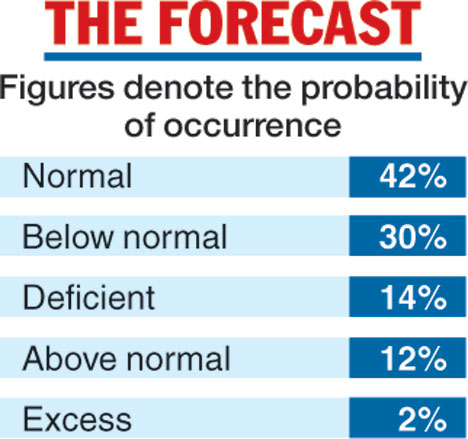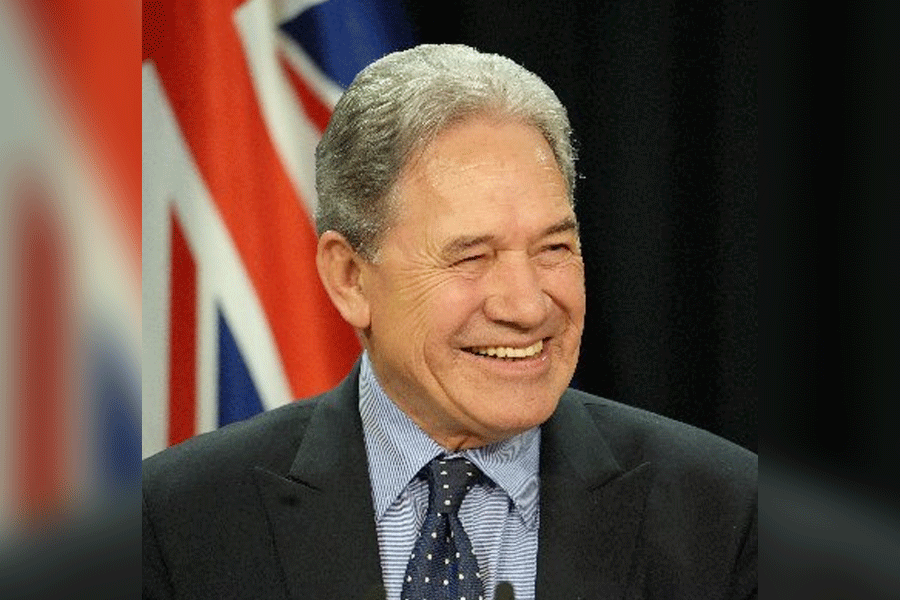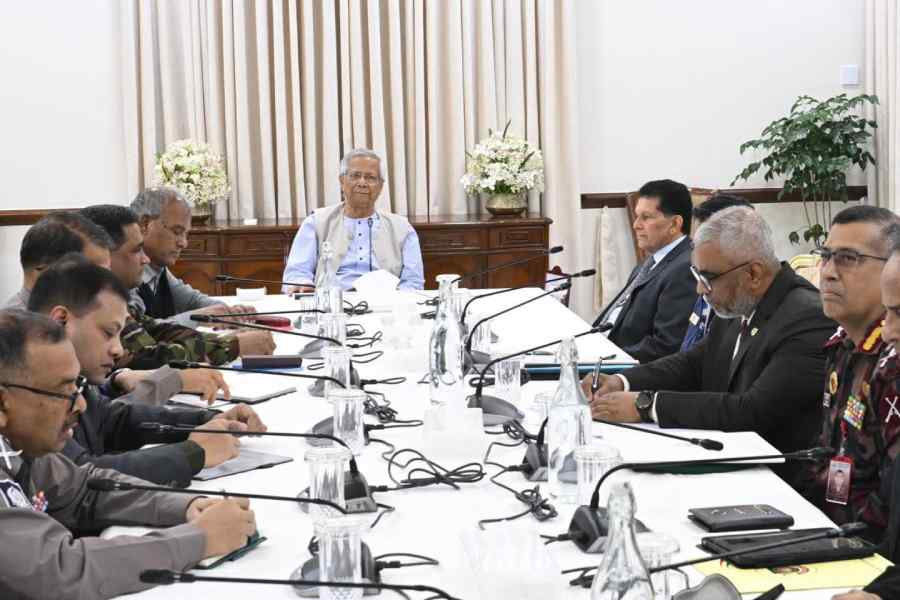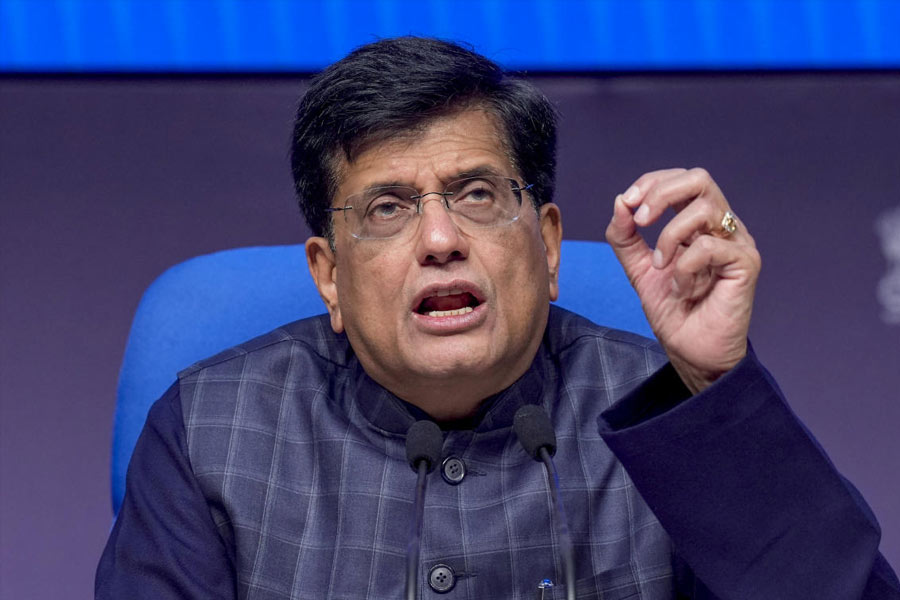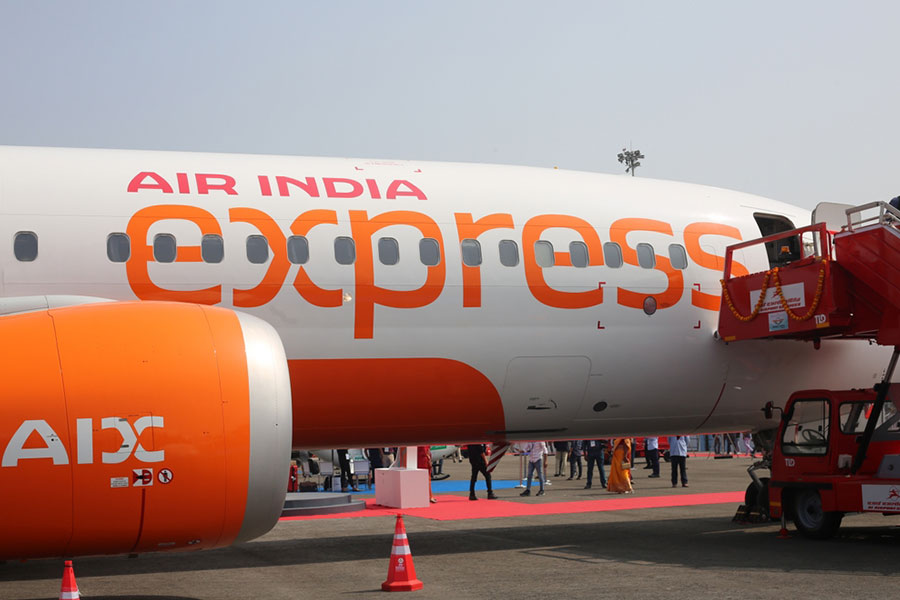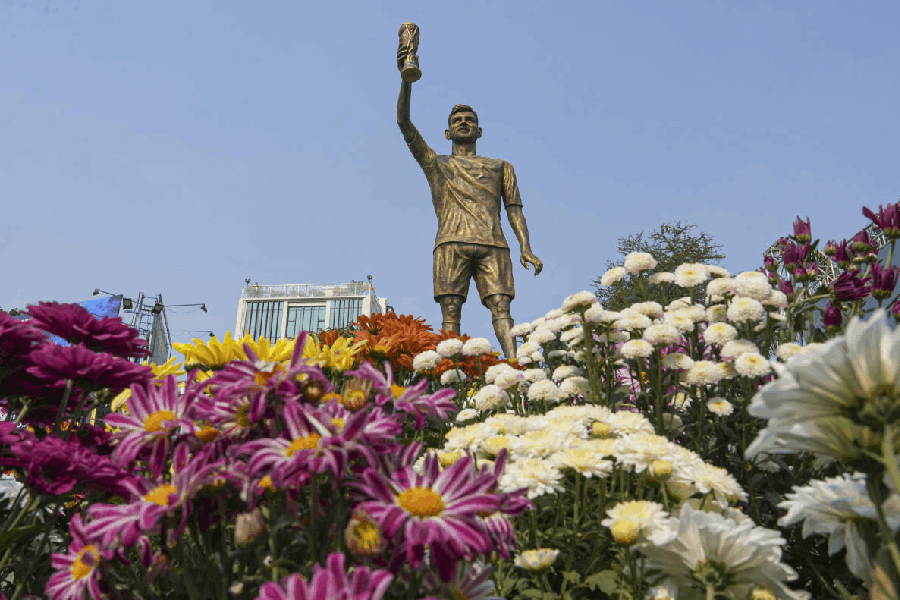
New Delhi: The national weather agency has predicted a normal summer monsoon for the third successive year, bringing a degree of relief to the Narendra Modi government that has been battling a farmer backlash.
The summer monsoon, which accounts for around 70 per cent of the annual rainfall in the country and is critical for crops, water reservoirs and hydroelectric power, will during 2018 be 97 per cent of the average, the Indian Meteorological Department (IMD) said.
The IMD, releasing its first and preliminary long-range forecast (LRF) for the 2018 monsoon, also said its calculations forecast a 42 per cent probability that the rainfall will be normal.
The early forecast alone cannot determine the consequences for agriculture but it does offer a breather to the Modi government at a time it has been at the receiving end of setback after setback. One of the problems tormenting the government has been farmer unrest that manifested itself through a huge rally in Mumbai recently.
Weather officials said the mid-April forecast, which only provides an overall figure for the quantum of rainfall across the country, would be followed up by an update in June that would predict the distribution of rainfall over regions and the monsoon months.
The predicted 97 per cent of the long-period average for 2018 is slightly higher than the actual rainfall of 95 per cent during 2017, a year marked by record food grain production. India's rice, maize, coarse cereals and pulses, including urad yields, broke records during 2017.
The long-period average for the monsoon season from June through September is 89cm, the average overall rainfall over the country between 1951 and 2000.
The preliminary forecast is based on a combination of statistical techniques and computer simulations that rely on multiple weather parameters - from Pacific and Indian Ocean sea surface temperatures to northwestern European temperatures - to make the forecast.
"We're closely watching these parameters, including the sea surface temperatures in the Pacific and Indian Oceans," K.J. Ramesh, the director-general of the IMD, told reporters. Over the next six to eight weeks, the IMD will track global weather conditions for a refined forecast to be issued in June, he said.
"We can now give only an all-India figure," Ramesh said. The June LRF will predict the distribution of rainfall during the months of July and August and quantify the expected rainfall in each of several regions - the Northeast, the northwest, central India and the southern peninsula.
The probabilistic calculations also assign a 30 per cent chance of a below normal monsoon and a 14 per cent chance of a deficient monsoon. But IMD officials said their forecast assigns the highest probability to a normal monsoon.
Current global long-range weather forecasts predict that the sea surface temperature conditions in the equatorial Indian Ocean called the Indian Ocean Dipole (IOD) may turn "weak negative" during the middle of the monsoon season.
Although this could be of concern because a "positive" IOD is associated with a strong monsoon, scientists say the connection between the summer monsoon and the IOD is less strong than the relationship between the monsoon and the Pacific sea surface temperatures.
"The Pacific sea surface temperatures do not appear detrimental to the monsoon this year," said D. Sivananda Pai, the head of the IMD's LRF operations.
The accuracy of the LRF has increased over the years, Pai said. The errors in the LRF have decreased from 9 per cent of the LPA between 1996 and 2006 to about 6 per cent of the LPA between 2007 and 2017.
In its April LRF last year, the IMD had predicted 96 per cent rainfall, then revised it to 98 per cent in the June 2017 forecast. The actual rainfall performance was about 95 per cent.

